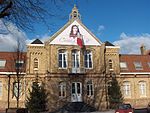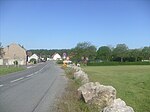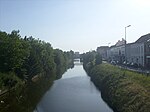Fort-Mardyck
1622 establishments in the Holy Roman EmpireFormer communes of Nord (French department)French FlandersNord (French department) geography stubsPages with French IPA
Fort-Mardyck (French pronunciation: [fɔʁ maʁdik]; Dutch: Fort-Mardijk; West Flemish: Fort-Mardyk) is a former commune in the Nord department in northern France. It has been part of the commune of Dunkirk since 9 December 2010. In 2019 it had 3,403 inhabitants.
Excerpt from the Wikipedia article Fort-Mardyck (License: CC BY-SA 3.0, Authors).Fort-Mardyck
Rue Jules Turbot, Dunkirk Fort-Mardyck
Geographical coordinates (GPS) Address Nearby Places Show on map
Geographical coordinates (GPS)
| Latitude | Longitude |
|---|---|
| N 51.031 ° | E 2.3061 ° |
Address
Rue Jules Turbot
59430 Dunkirk, Fort-Mardyck
Hauts-de-France, France
Open on Google Maps










